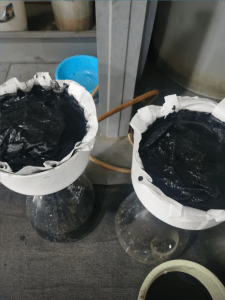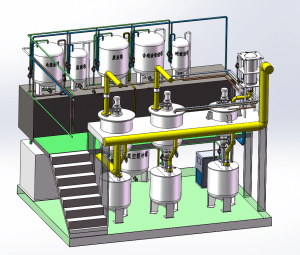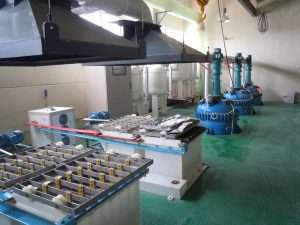Call us now:
Refining iridium powder is a complex process that involves multiple steps of chemical and metallurgical techniques. Here are the basic steps for refining iridium powder:
-
Ore Processing:
- Iridium is usually found in platinum and nickel ores. In the initial refining stages, the ore is crushed and ground to release iridium and other metals.
-
Flotation and Roasting:
- The iridium is separated from other metals using flotation methods, followed by roasting to oxidize iridium minerals.
-
Acid Leaching:
- The roasted ore is treated with concentrated acids, such as aqua regia (a mixture of concentrated nitric acid and hydrochloric acid), to dissolve iridium and other metals: Ir+6HCl+HNO3→H2[IrCl6]+NO2+2H2O\text{Ir} + 6\text{HCl} + \text{HNO}_3 \rightarrow \text{H}_2[\text{IrCl}_6] + \text{NO}_2 + 2\text{H}_2\text{O}
-
Extraction and Precipitation:
- Iridium ions are extracted from the solution using various chemical reagents, such as chloriridic acid (H₂IrCl₆) or other organic extractants.
- Iridium ions are then precipitated from the solution, usually using ammonium or sodium salts to precipitate iridium.
-
Reduction:
- The precipitated iridium compound is reduced to metallic iridium. The reducing agent can be hydrogen gas or other reducing gases. The reduction reaction typically occurs at high temperatures: H2[IrCl6]+3H2→2Ir+6HCl\text{H}_2[\text{IrCl}_6] + 3\text{H}_2 \rightarrow 2\text{Ir} + 6\text{HCl}
-
Electrolytic Refining:
- Further purification of iridium metal is achieved through electrolysis, using impure iridium as the anode and pure iridium as the cathode in an electrolytic cell.
- During electrolysis, iridium ions dissolve from the anode and deposit onto the cathode, forming high-purity iridium metal.
-
Melting and Casting:
- The final iridium metal powder is melted at high temperatures to form iridium ingots. These ingots can be further processed into various shapes and sizes to meet different application requirements.


